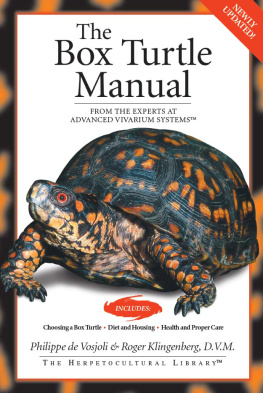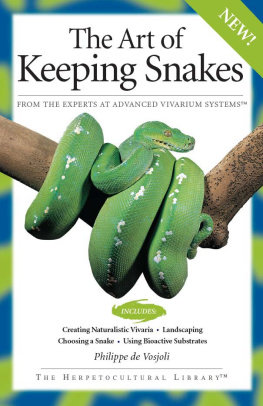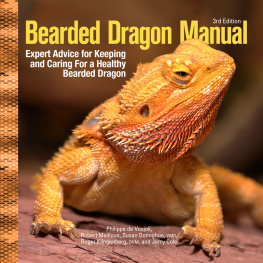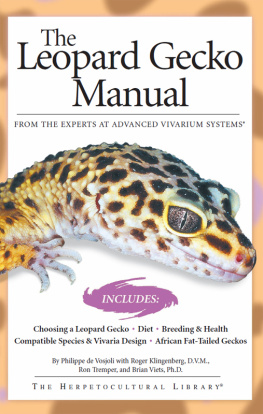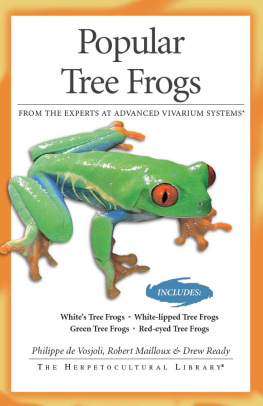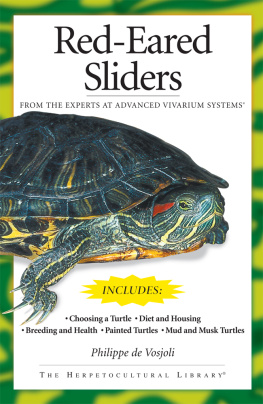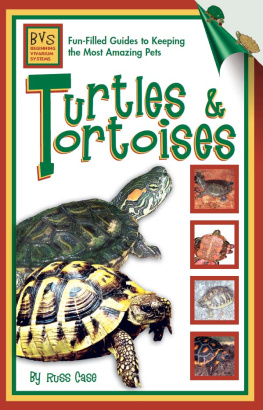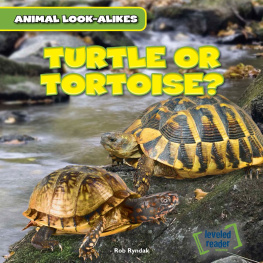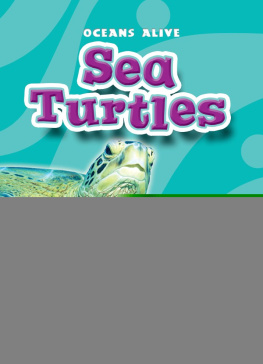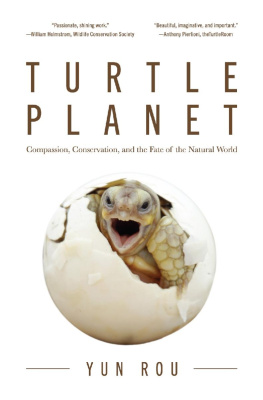Kristin Mehus-Roe, editor, project manager
Nick Clemente, special consultant
Jarad Krywicki, contributing editor
Designed by Michael Vincent Capozzi
Rachel Rice, indexer
Cover photo by David Northcott.
The additional photographs in this book are by Bill Love, courtesy of Glades Herp., pp. 4, 5, 8, 10, 11, 15, 17, 21 (bottom), 30, 33, 34, 37, 44; Paul Freed, pp. 7, 12, 14, 1821 (top), 39, 42; Roger Klingenberg, pp. 6, 25, 29, 4772; Chris Estep, p. 38; Josh Tashjian, courtesy of Fort Worth Zoo, p. 40.
Copyright 1992, 1998, 2003 by Advanced Vivarium Systems
Third edition, revised and updated
All rights reserved. No part of this publication may be reproduced or transmitted in any form or by any means, electronic or mechanical including photocopy, recording or any information and retrieval system, without permission in writing from the publisher, except by reviewer, who may quote brief passages in a review.
I wish to thank Roger Klingenberg for coming to the rescue and greatly improving the material on recognition and treatment of diseases, and Bill Love of Glades Herp for coming through with great photographs.
LCCN: 96-183295
ISBN: 1-882770-71-4
eISBN: 978-1-62008-036-8

An Imprint of I-5 Press
A Division of I-5 Publishing, LLC
3 Burroughs
Irvine, CA 92618
www.facebook.com/i5press
www.i5publishing.com
We want to hear from you. What books would you like to see in the future? Please feel free to write us with any comments on our AVS books.
Printed in Singapore
10 9 8 7 6 5 4
CONTENTS
INTRODUCTION
A lthough box turtles are among the worlds most popular and beautiful turtles, they are also some of the most neglected and mistreated of all turtles sold in pet stores. Many new pet owners refuse to confront the health problems common to commercially collected box turtles, while caring owners often have difficulty finding proper care information.
This book is for pet owners who want to properly appreciate and care for their box turtles. If you think of a box turtle as merely an inexpensive and disposable childs pet, save yourself some moneyand save a box turtleby simply not acquiring one. In many respects, they are even more amazing than their cartoon counterparts, and they have been on earth thousands of years longer than any animated reptile. They many teach you one or two lessons about the delicate balance of life, natural law, and the many ways in which intelligence is manifested in nature.
The following pages present background information and guidelines for care that will help prospective owners keep their turtles happy and healthy. They also include a section concerning the care of two species of Asian box turtles of the genus Cuora that are also commonly sold in the pet trade.

A three-toed box turtle clearly shows its attractive coloration. This is the most readily available box turtle in the pet trade; it is also the most adaptable.
CHAPTER 1
GENERAL INFORMATION
A lthough box turtles are beautiful, interesting animals, they are also inexpensive and at times overexploited, neglected, and improperly treated. In fact, the majority of animals collected for the pet trade die within the first year in captivity. Despite this, several books on amphibians and reptiles consistently describe box turtles as ideal pet turtles with simplistic care requirements. However, many first-time turtle owners have extensive problemssometimes ending in deathwith box turtles.
In large part, the reason for the contradiction between what has been written about the care of box turtles and their actual requirements is that the authors of older herpetological books approached the subject from a different perspective from the one we have today. Originally, the large-scale commercial collecting and marketing of box turtles that has emerged over the last twenty years didnt exist. Most box turtles were locally collected and kept by individuals or sold to the local pet store. As a result, box turtles were kept in relatively isolated conditions similar to those they were already accustomed to in the wild. Today, commercial trappers collect box turtles by the hundreds and thousands in the states where they still exist in substantial numbers and can legally be collected. Often, the collectors stuff the turtles in burlap bags or pile them into boxes, later releasing them in holding compounds, where they are kept in overcrowded conditions.

Conservation efforts, including captive breeding, are urgently needed to manage the eastern box turtle subspecies (male shown).
Depending on how the captive turtles are maintained, they may contract diseases spread through water, food, or unsanitary conditions. If kept too cool, they may develop respiratory disorders. Parasite and bacterial infections also tend to spread among a group. At some point, the turtles are shipped to pet distributors, who may also maintain them in overcrowded conditions, although many specialized reptile wholesalers now make a concerted effort to provide improved conditions for maintaining these animals. The turtles are then shipped and delivered to retail outlets.
Because of these factors, the box turtles sold in pet stores are not the same hardy box turtles mentioned in care books; most are stressed, diseased, and dehydrated. Thus, the best way to successfully establish commercially sold box turtles is to acknowledge the problems associated with collected animals and then contend with their conditions.
In order to fare well in captivity, box turtles require more care than many other turtle species. Although their low purchase price may give the illusion that box turtles are expendable and easily replaced, they are extremely special animals. Adult box turtles are worth considerably more than what people now pay for them. For herpetoculturists in other countries, American box turtles are considered prized specimens, among the most desirable of turtles.

Due to the way American box turtles are maintained after collection in the wild, a relatively high percentage of turtles sold become sick and require treatment.
The Future of Box Turtles
If no efforts are made to manage wild populations and to establish captive-breeding programs, box turtles will probably achieve protected status and be unavailable in the pet trade. Herpetoculturists should strive to change current U.S. laws restricting the commercial sales of turtles under 4 inches long so that captive breeding of box turtles becomes practical. In addition, laws should prevent the sale of turtles to minors. All sales should require a release form, whereby adults acknowledge and accept the risks involved (such as salmonellosis) with owning a turtle. Every retailer would be expected to provide information on hygiene practices to reduce the risks of contracting salmonellosis.
The Basics

An eastern box turtle.
Box turtles earned their common name because of their ability to draw their heads and limbs inside their shells and effectively seal themselves inas if in a box. They accomplish this behavior with the help of a plastral hinge that allows them to move of sections of their plastron (the lower part of the shell).
Next page
